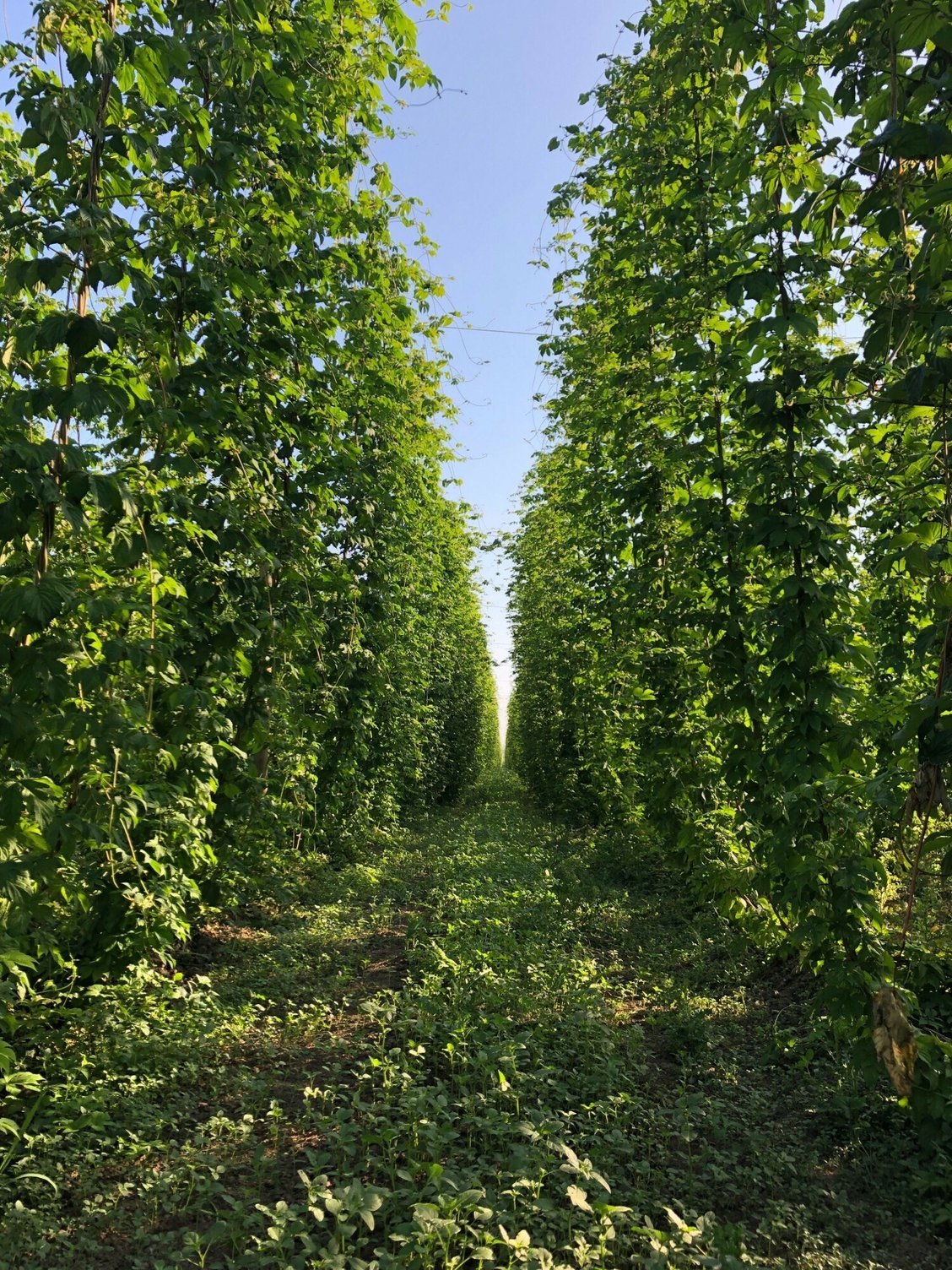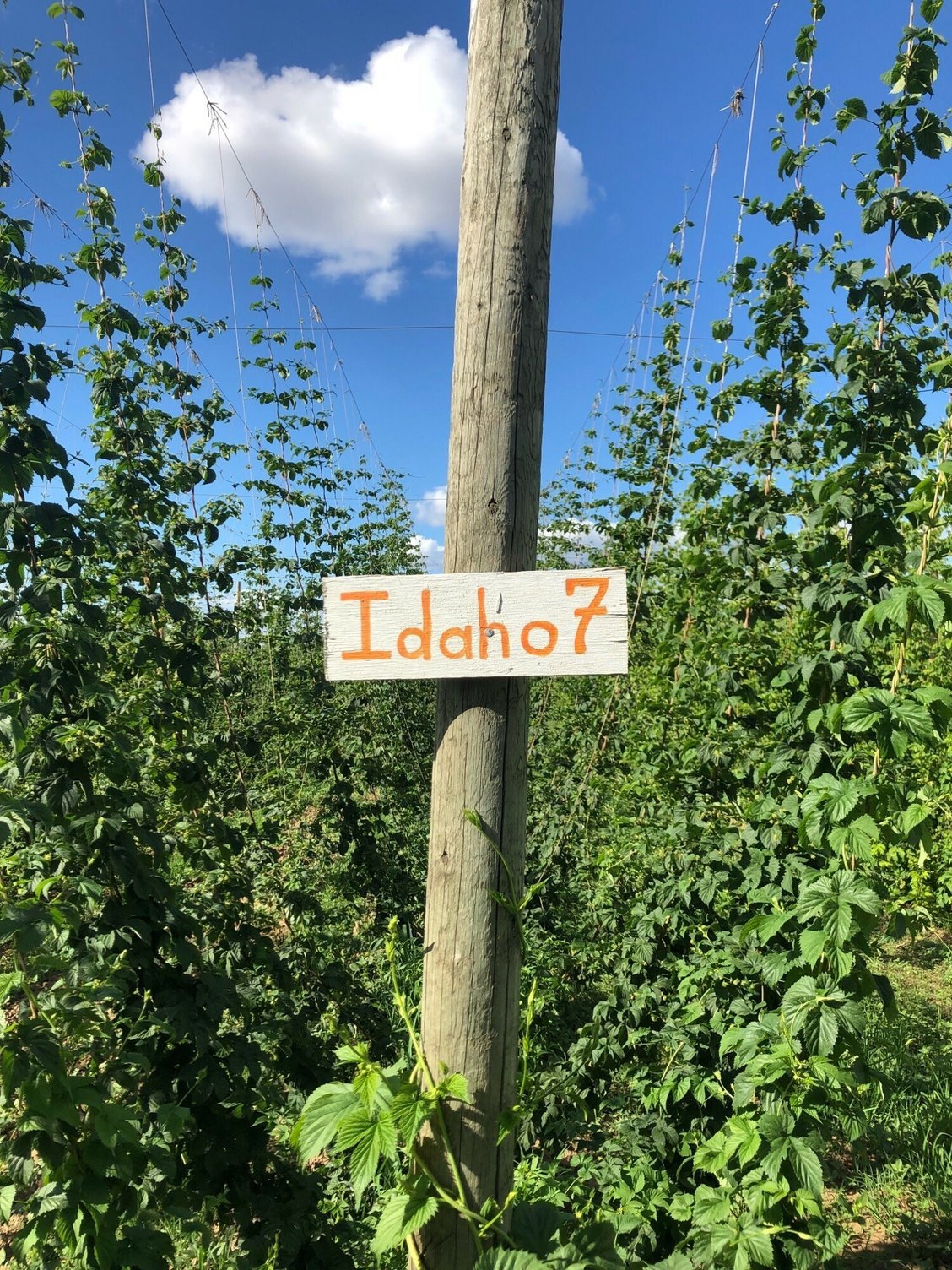Q&A with Blake Crosby
2018 Ground Report: New Varieties For Harvest '18
As a family-owned business, Crosby Hop Farm honors tradition while simultaneously pushing the industry forward. In that spirit, company CEO Blake Crosby is happy to share the two newest additions to Oregon’s outstanding hop-growing landscape: Old-school Comet, whose alluring “wild American” aromas are finally being appreciated decades after the variety was first dismissed as a failed alpha hop, and new-school Idaho 7™, a pineapple-flavored powerhouse developed by partner grower Jackson Hop of Idaho. They’re both growing beautifully in this year’s warm, dry conditions in the Willamette Valley. Read on for more details about two exciting hop varieties completely new to Oregon:
I understand you’ve planted Comet hops for the first time this year — what made you choose that variety in particular?
We’ve been interested in Comet for some time because a lot of brewers are excited about it, which is always a good reason to be interested in something. It’s tropical and citrusy in the vein of many new-school hops, but it’s actually an old-school variety that was obscure and kind of forgotten about. This was largely because Comet was developed as an alpha hop for the bittering market in the 1970s but ultimately wasn’t competitive as an alpha hop, so it was dismissed.
About five years ago, several leading craft brewers started to get into it and we figured out it had a cool flavor and aroma profile that had been way ahead of its time.
Its big tropical and citrus notes are complemented by what the industry often calls “wild American aroma,” which used to be a way of describing thiol intensive aromas that were considered a bad thing. Today this combination is what most people want and what a lot of popular modern IPAs are known for. Comet is a hip early example of those types of flavors and aromas.

What breweries do you see using it?
Brewers like Sierra Nevada paved the way for Comet’s return; and many others have caught onto it too. I know Firestone Walker featured Comet in their Luponic Series not too long ago as well.
In addition to the excitement around Comet in the craft scene, part of the reason I wanted to grow it was that it’s never been grown in Oregon for production and I’d like to apply our production protocols to that hop and see what we can get out of it from a quality standpoint. I think it’ll be unique, and I anticipate some cool flavors that might not be out there in any other versions of Comet.
How is Comet growing in your area?
It’s funny, Comet is known for being susceptible to downy mildew — as I mentioned earlier, usually caused by moisture with warm temperatures, so obviously Oregon often has higher risk of that — but this year has been dry, it’s not much of an issue. One great feature of Comet from a disease management standpoint though is it’s completely resistant to powdery mildew.
The Comet plants look great, even stronger and more vigorous than I expected. Their signature look is this distinct bright-yellow tinge in the spring — it’s very odd, as if they’re deficient nutritionally, but it’s just their genetics. I’m excited about them.
You’ve also got the only Idaho 7™ hop plants in the ground in Oregon this year, right?
Yes, it’s another first for Oregon.
Innovating is part of what we do to keep things fun and interesting. We like to push the envelope and be on the forefront of what’s new given how fast the craft market changes. With these new varieties it’s important to innovate and respond to the market, with it evolving so quickly.

How and why did you make the decision to grow Idaho 7™?
In 2015, Crosby Hop Farm and Jackson Hop, in Idaho, started working together to promote Idaho 7™. Jackson developed it, and given the sales platform we’ve developed and that we have the infrastructure to bring quality pellets to market, we saw an opportunity in the market to move the hop into the craft space. We started promoting it, and it’s really grown the last few years. It’s still small scale but becoming accepted as a mass-market contender, which takes years, and it’s time to expand the variety to other regions to see what it does. When a variety gets large enough volume-wise you want to diversify the growing locale —not only for variety qualities in terms of terroir and flavor and aroma, but also to minimize risk, so you don’t have one farm growing the crop for the whole market.
So right now we’re piloting it, just farming a small crop this year, more of an R&D experiment to see how it grows in our state. We’re excited to see what kind of character we’ll get out of it based on our practices and how our region affects it.
How would you describe Idaho 7™ for brewers?
Idaho 7™ is very fruity. I get a distinctive pineapple aroma in beer and hop samples, it carries through very well in dry-hopping. It also has what some people would describe as a more herbal or tea-like element to it. Then a lot of various tropical and ripe fruit aromas.
Like most hops, Idaho 7™ sings when paired with other great hops. I’ve had good single-hop beers with it but I’ve had amazing beers where Idaho 7™ is paired with other varieties to add complexity. For brewers looking to emphasize the really fruity modern character, we’re often seeing Idaho 7™ together with El Dorado®, Azacca®, Strata®, Meridian®, Comet, and Amarillo® just to name a few. Of course like anything the combinations are endless and brewer creativity is the most important part.
Come back next month for more updates and behind-the-scenes insight into Crosby Hop Farm’s operations, and in the meantime check out previous Beyond the Box Q&As with Blake Crosby!